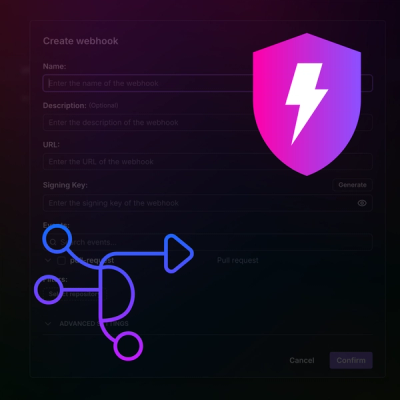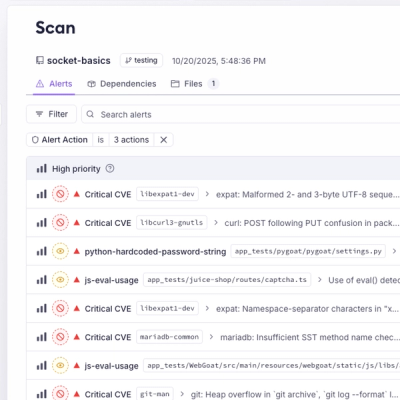
Product
Introducing Webhook Events for Pull Request Scans
Add real-time Socket webhook events to your workflows to automatically receive pull request scan results and security alerts in real time.
A pure-JavaScript fast, CSS selector engine program to be easily select DOM-Elements

A pure-JavaScript fast, CSS selector engine program to be easily select DOM-Elements.

Snizzle v1.6.0 in new features included for related advance DOM-Element Selecting Snizzle library in added new features XPath selenium now user can be select DOM elements XPath through.
In order to build Snizzle, you should have Node.js/npm latest and git 1.6.0 or later (earlier versions might work OK, but are not tested).
For Windows you have to download and install git and Node.js.
Mac OS users should install Homebrew. Once Homebrew is installed, run brew install git to install git, and brew install node to install Node.js.
Linux/BSD users should use their appropriate package managers to install git and Node.js, or build from source if you swing that way. Easy-peasy.
Snizzle is registered as a package on npm. You can install the latest version of Snizzle with the npm CLI command:
# install locally (recomended)
yarn add snizzle
# install locally (recomended)
npm install snizzle --save
As an alternative you can use the Yarn CLI command:
For information on how to get started and how to use Snizzle, please see Snizzle's documentation. For source files and issues, please visit the Snizzle repository.
If upgrading, please see the blog post for release 1.6.0. This includes notable differences from the previous version and a more readable changelog.
Below are some of the most common ways to include Snizzle
<!--including Snizzle (recomended) HTML document in head section -->
<script src="https://cdn.jsdelivr.net/npm/snizzle@1.8.0/dist/snizzle.min.js"></script>
There are several ways to use Webpack, Browserify or Babel. For more information on using these tools, please refer to the corresponding project's documentation. In the script, including Snizzle will usually look like this:
import Snizzle from "snizzle";
If you need to use Snizzle in a file that's not an ECMAScript module, you can use the CommonJS syntax:
const Snizzle = require("snizzle");
AMD is a module format built for the browser. For more information, we recommend
define(["snizzle"], function(snizzle) {
});
There are simple some usage Snizzle code example syntax and learn more click Documentation.
Code example: Snizzle("body > div:nth-child(2) + main:eq(2) > :input:disabled)
Clone a copy of the main Snizzle git repo by running:
git clone git://github.com/jqrony/snizzle.git
In the snizzle/dist folder you will find build version of snizzle along with the minified copy and associated map file.
See CONTRIBUTING.md
FAQs
A pure-JavaScript fast, CSS selector engine program to be easily select DOM-Elements
We found that snizzle demonstrated a healthy version release cadence and project activity because the last version was released less than a year ago. It has 1 open source maintainer collaborating on the project.
Did you know?

Socket for GitHub automatically highlights issues in each pull request and monitors the health of all your open source dependencies. Discover the contents of your packages and block harmful activity before you install or update your dependencies.

Product
Add real-time Socket webhook events to your workflows to automatically receive pull request scan results and security alerts in real time.

Research
The Socket Threat Research Team uncovered malicious NuGet packages typosquatting the popular Nethereum project to steal wallet keys.

Product
A single platform for static analysis, secrets detection, container scanning, and CVE checks—built on trusted open source tools, ready to run out of the box.